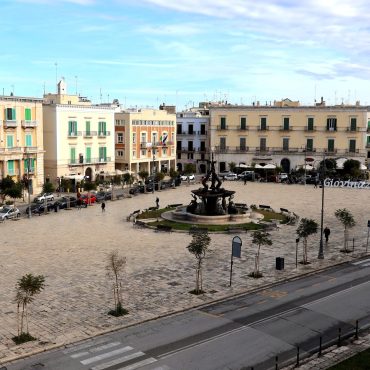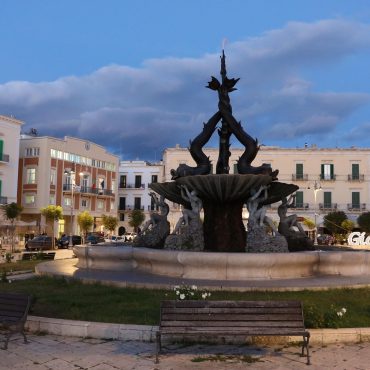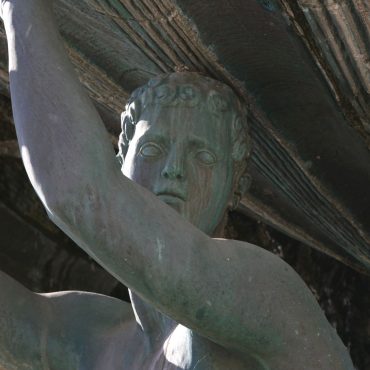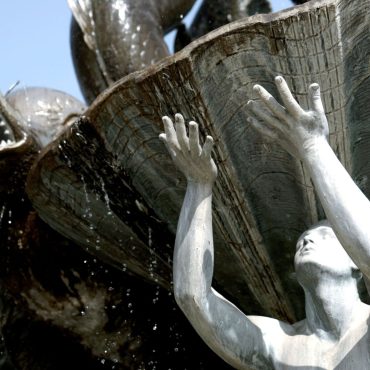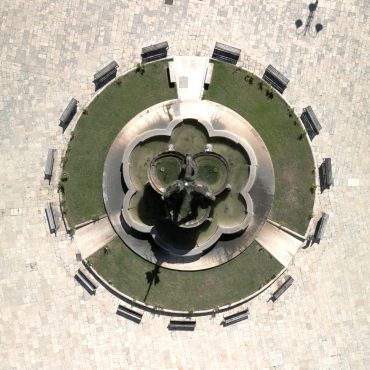
Piazza Vittorio Emanuele II and Fontana dei Tritoni
(18th century – 20th century)
At the end of the 18th century, Giovinazzo became part of the Kingdom of Naples. A visit from Ferdinando IV and Maria Carolina in the spring of 1797 marked a moment of fervent activity in the town. The royal visit brought great enthusiasm to the townspeople who did everything to facilitate their visit to the cathdral, not easily accessible at the time. The townspeople managed to raise the considerable sum of 270 ducats for “improvements and gifts”. With these funds they were able to reduce the size of the inlet of the harbour, filling it in and turning it into the large plaza known as the Borgo.
In the following years, the noble families of Giovinazzo built their homes around the Borgo, thus expanding the town which took on an open fan shape from east to west. The Borgo, later renamed Piazza Municipio changed its name again in the 20th century to Piazza Vittorio Emanuele II, heart of the town of Giovinazzo. This trapezoidal square laid with local calcareous slabs has become the heart of Giovinazzo social life.
In the centre of the square there was originally a stone stage where the band of the Vittorio Emanuele II Institution played every Sunday. In 1933 this was replaced by the monumental Fontana dei Tritoni, work of Tommaso Piscitelli of Giovinazzo. The fountain, made from bronze and rocks, shows athletic youths holding on their shoulders three large shells. In the centre, the aggressive tritons seem to threaten anyone who dares to approach. The momument refects the dual identity of Giovinazzo, between the sea and the land, fishermen and farmers. The square is often transformed into an open air stage for musical performances and shows, confirming its role as the centre of the community.
